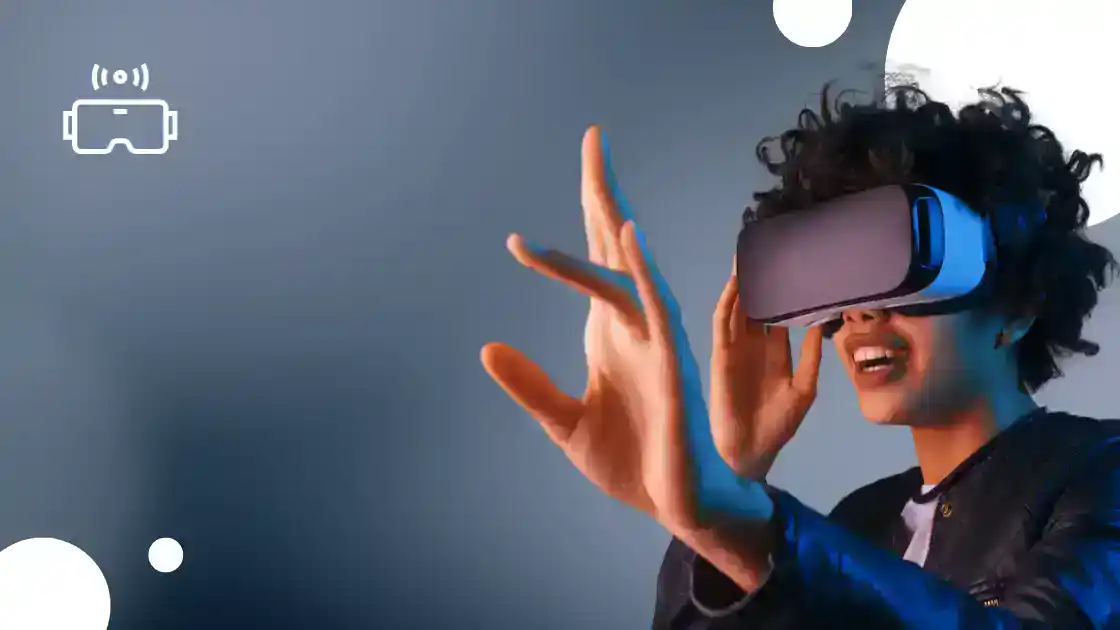A virtual reality program has been created by researchers that enables users to manipulate a variety of 3D modeling tools solely through hand gestures.
Table of Contents
1. Introduction
Through the implementation of machine learning, groundbreaking technology has emerged in the realm of Virtual Reality – ‘HotGestures’, akin to desktop hotkeys.
2. Pioneering Virtual Reality Interaction
This innovative technology enables users to construct figures and shapes in virtual reality without the need to interact with a menu, allowing them to maintain focus on their tasks without interruption. While the idea of manipulating tools in virtual reality has been depicted in movies for years, this is the first time that such a ‘superhuman’ capability has become a reality. The findings of this groundbreaking research have been documented in the journal IEEE Transactions on Visualization and Computer Graphics.
3. Research Documentation
The findings of this groundbreaking research have been meticulously documented in the esteemed journal IEEE Transactions on Visualization and Computer Graphics, adding valuable knowledge to the Virtual Reality domain.

4. Exploring Beyond Gaming
Although VR and its associated applications have been hailed as transformative, their potential beyond gaming has yet to be fully realized. Learning to manage XR applications in various fields can unlock this potential, making such technologies more accessible and practical for everyday use. Professor Per Ola Kristensson, the leader of the research team from Cambridge’s Department of Engineering, explains that while users may experience certain benefits when using virtual reality, very few individuals are inclined to use it for extended periods. Apart from visual fatigue and ergonomic concerns, virtual reality does not provide any unique offerings that are unattainable in the physical realm, as stated by him.
5. The Evolution of Interaction
In the realm of VR, ‘HotGestures’ redefines interaction by allowing users to control 3D environments with natural hand gestures, eliminating the need for menus and memory-dependent hotkeys.
6. Recognizing Gestures for 3D Modeling
This approach leverages the natural way in which we communicate using our hands in the real world and extends it to the virtual realm, as explained by Kristensson. To conduct their study, the researchers constructed a neural network gesture recognition system capable of identifying ten distinct gestures associated with building 3D models, including pen, cube, cylinder, sphere, palette, spray, cut, scale, duplicate, and delete..
7. User Experiences with ‘HotGestures’
The team conducted two small studies in which participants utilized HotGestures, menu commands, or a combination of both. The gesture-based technique offered efficient and rapid shortcuts for selecting and utilizing tools. Participants found HotGestures to be distinct, swift, and user-friendly, while also complementing traditional menu-based interaction.
The system was meticulously designed by the researchers to ensure accurate recognition of commands and differentiate them from normal hand movements, thereby eliminating false activations. Overall, the gesture-based system outperformed the menu-based system in terms of speed.
8. Achieving Superhuman Abilities in Virtual Reality
Professor Kristensson emphasizes the need for Virtual Reality to provide almost superhuman abilities, distinguishing it from conventional keyboard and mouse interfaces.
9. Open Source Access and Standardization
The researchers aim to make the ‘HotGestures’ source code and dataset accessible, aspiring for its integration as a standard method of Virtual Reality interaction, moving away from outdated metaphors.
To facilitate the integration of this technology into VR applications, the researchers have made the source code and dataset publicly accessible.
“Our aim is for this to become a standard method of interacting with VR,” stated Kristensson. “We have been stuck with the outdated metaphor of the filing cabinet for far too long. We need innovative ways of interacting with technology, and we believe this is a step in the right direction. When implemented effectively, VR can be truly magical.”
10. Contributions to Virtual Reality Innovation
Acknowledging the partial support from the Engineering and Physical Sciences Research Council (EPSRC) in advancing Virtual Reality interactions a part of UK Research and Innovation (UKRI).